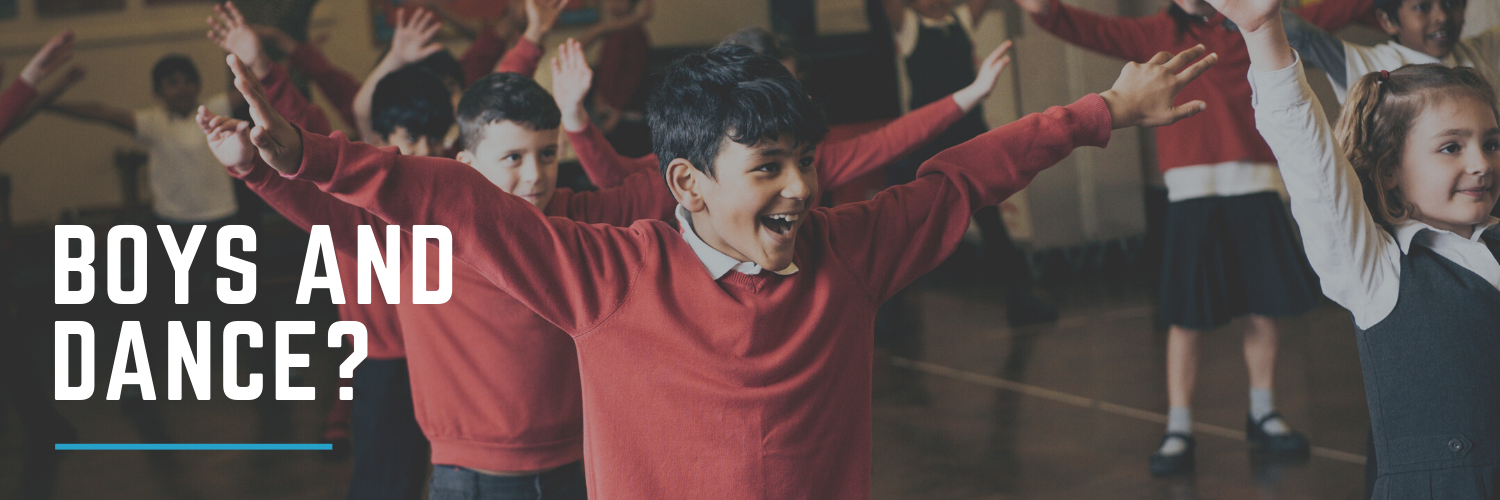Boys and Dance?
When organising dance workshops in Primary Schools we sometimes get asked about whether this is an activity boys can enjoy. A simple answer is: yes. But there’s more to it than that.
Popular culture and reality television has begun a dance revolution. From the all male dance troupe ‘Diversity’, to cricketer Darren Gough taking the ballroom by storm in ‘Strictly Come Dancing’, the growth in visible male role models in the dancing world has increased ten-fold in recent years.
Dance can be a wonderful activity full of benefits for all children, irrespective of gender.
If we want children to grow up to believe they can do anything and that they are not confined to certain activities which fit within gendered stereotypes, then we need to start changing how we talk about subjects like dance. Instead of worrying about the preconceptions of dance, let's take a look at some of the incredible benefits participating in dance can have for young boys.
Dance for physical development
For Key Stages 1,2 and 3, dance is a compulsory part of the PE national curriculum. It is recognised as being a vital part for childhood development both physically and mentally. In terms of physical growth, dance teaches balance, strength and coordination. These physical skills and spatial awareness are invaluable to all children’s development.
Former England Football Captain Rio Ferdinand was a childhood gymnast and ballet dancer, receiving a scholarship to the Central School of Ballet. In his autobiography he notes how his dance training improved his balance, flexibility and undoubtedly improved his movement as a footballer. It should be remembered that dance is part of the national curriculum for all students irrespective of gender because of the invaluable role it can play in childhood development.
Dance for emotional development
Dance provides a unique blend of physical and emotional development. Dance allows children to express themselves physically, and it provides them with an outlet to explore their own identity. As part of a society that wants to encourage young boys to express themselves and explore their emotions as part of tackling gender inequality and male mental health issues, exposing boys to new forms of self expression can be a fantastic tool.
Aspirations
Boys enjoying a dance session holds more than just the potential for the start of a lifetime in dance, rather it teaches them that there are no boundaries to what they can enjoy and pursue. School is the perfect place for children to try something new. Giving them the opportunity to experience dance in a space which they are familiar with and feel comfortable in can open their eyes to other possibilities. Offering children a wide array of experiences and opportunities tells them that they are capable of anything and that the whole world is their oyster.
In the Arts Council’s ‘Guide to Dance Education for Governors and Trustees’*, they summarise the importance of dance in primary schools:
“Dance remains one of the most popular art forms amongst young people. Surveys show that dance is the second most popular physical activity following football, and is a very attractive cultural form through which young people of all learning abilities can express their own identities and cultures. Dance enables young people to gain artistic skills and discipline, as well as developing their ability in physical interaction, team working, problem solving, observing, evaluating, verbal and non-verbal communication. Through dance young people collaborate with other art forms, and make connections with design in space, musicality and creativity. Dance can improve self-esteem and confidence; it can widen aspiration and help tackle obesity and other health issues.”
We love providing all children with the opportunity to experience dance in primary school. And we love to hear feedback from schools when boys show and unexpected enthusiasm for their dance workshop. You can find out more about our dance workshops here.
- Katie
*You can read the full Arts Council Guide here.

